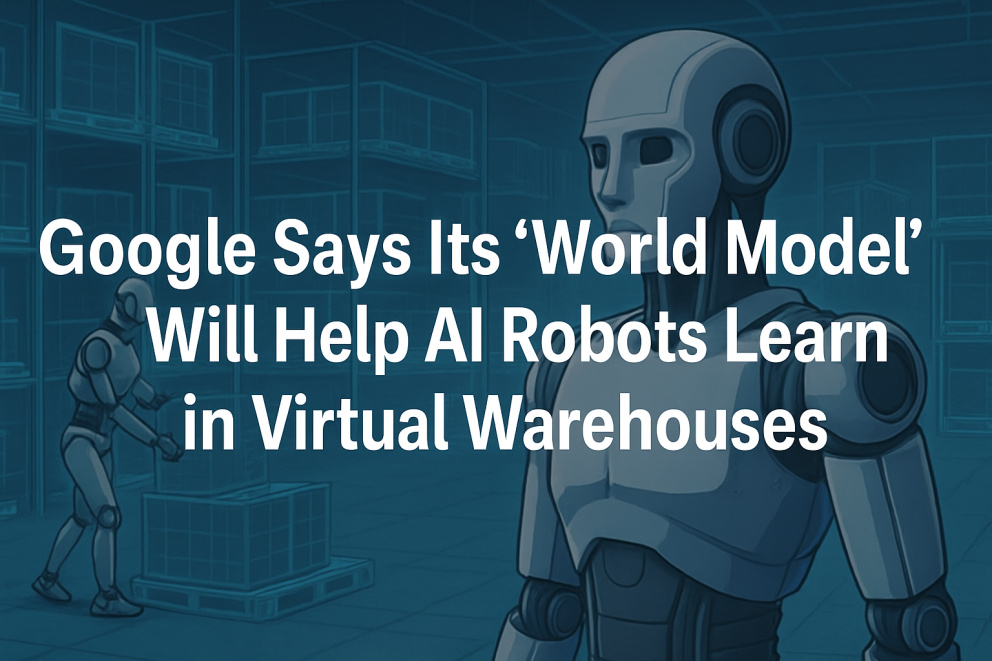Google Says Its World Model Will Help AI Robots Learn in Virtual Warehouses
The race to develop smarter, more capable AI-powered robots
is heating up, and Google is making significant strides with its latest
innovation. The tech giant has introduced a ’World Model’ designed to help AI
robots learn and adapt in simulated environments, such as virtual warehouses,
before deploying them in the real world.
This breakthrough could accelerate the development of robots
capable of performing complex tasks in dynamic environments—from logistics and
manufacturing to healthcare and home assistance.
What Is
Google’s World Model?
Google’s World Model is an AI framework that allows robots
to learn and refine their skills in a digital simulation before applying them
in physical spaces. By training in highly detailed virtual warehouses, robots
can practice navigating shelves, handling objects, and responding to unexpected
obstacles without the risks or costs associated with real-world trial and
error.
The concept builds on advancements in reinforcement
learning (RL) and simulation-based training, where AI
models learn by interacting with a virtual environment that mimics real-world
physics and dynamics.
Key Features:
- Virtual
Training Grounds: Robots train in photorealistic 3D simulations
that replicate warehouse layouts, inventory systems, and even human
workers.
- Generalization
Across Scenarios: The World Model helps AI adapt to new, unseen
environments by learning fundamental principles rather than just
memorizing specific tasks.
- Efficient
Learning: By avoiding real-world constraints (like hardware wear
and tear), robots can train much faster and at a lower cost.
Why
Virtual Warehouses?
Warehouses are an ideal testing ground for AI robotics due
to their structured yet complex nature. Tasks like picking and packing,
inventory management, and autonomous navigation require precision,
adaptability, and real-time decision-making—all of which can be refined in a
simulated setting.
Google’s approach allows robots to:
✔ Practice millions of trial runs in seconds.
✔ Learn from mistakes without real-world
consequences.
✔ Adapt to variations in layout, lighting, and object
placement.
Potential
Applications Beyond Warehouses
While virtual warehouses are the initial focus, the
implications extend far beyond logistics:
- Manufacturing: AI
robots could optimize assembly lines and quality control.
- Healthcare: Surgical
robots might train in simulated operating rooms.
- Autonomous
Vehicles: Self-driving cars could refine decision-making in
digital cities before hitting the road.
Challenges
Ahead
Despite the promise, there are hurdles:
- Sim-to-Real
Gap: Ensuring skills learned in simulation transfer effectively
to physical robots.
- Computational
Costs: High-fidelity simulations require significant processing
power.
- Ethical
Concerns: As AI robots become more autonomous, questions about
safety and job displacement arise.
The
Future of AI Robotics
Google’s World Model represents a major step toward scalable,
adaptable robotics. By leveraging virtual environments, AI systems can
learn faster, reduce operational risks, and eventually perform tasks with
human-like flexibility.
As the technology matures, we may see AI robots seamlessly
transitioning from digital training to real-world deployment—revolutionizing
industries and everyday life.









